McDonald’s isn’t successful because of its food. It is successful because of the availability of its food. Whether in LA or NYC, McDonald’s is right around the corner – and so also the “parts and service” you’re looking for.
You don’t have to drive to from NY to LA to get a Quarter Pounder with Cheese.
But what if you need a key part for a brand of car that’s no longer sold anywhere?
Such cars are orphaned cars. They no longer have parental – i.e., manufacturer and dealer – support. But that doesn’t mean you shouldn’t adopt one, especially if its “parent” disappeared relatively recently. 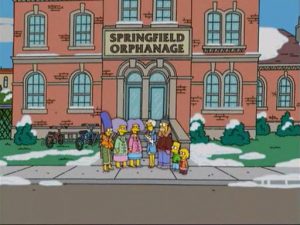
Or it still has an “uncle.”
In either case, getting necessary parts – and service – is usually pretty much the same as getting parts and service for cars that don’t come from broken homes. The main difference is the absence of a dealership with a sign that has the same name as the badge on the orphaned car.
For example, a 2006 Pontiac GTO showed up at my friend’s shop the other day.Pontiac hasn’t been in business since 2009, but GM – Pontiac’s “uncle” – still is. And while both the GTO and Pontiacs generally aren’t being made anymore, GM is still making parts for late-model GTOs, which share almost all of their mechanical parts with cars that GM is still making. You can order these parts at any GM dealer – and any GM dealer can service a Pontiac (or a Saturn or a Hummer or an Oldsmobile) just as well as a Chevy or Buick.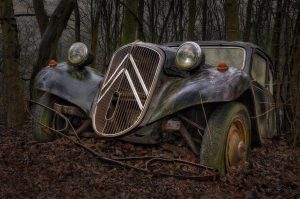
The same goes for a Mercury – which any Ford dealer will have or be able to get most parts for and also be able to service. And Plymouth – at your Chrysler or Dodge store. Where you’ll also be able to get parts and service for your Fiat – or Alfa. Both of those brands are part of the FiatChrysler (FCA) brand and so support for Fiats and Alfas will still be around even if Fiat and Alfa – the dealerships – no longer are.
These parent companies can also handle warranty-related issues and will help with recalls and so on.
It’s hard to find a genuinely, utterly abandoned car – one with no still-living relatives that can come to the rescue – that isn’t a very old or very unpopular car. And even then, so long as it isn’t also very rare car, it’s usually possible to find critical mechanical parts and once you’ve found those, you don’t have to look far for a dealer.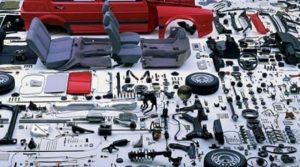
All you need is a mechanic.
Anyone competent to fix cars can fix practically any car – provided he’s got the necessary parts.
My ’76 Pontiac Trans-Am, for instance, isn’t just orphaned by badge – the last Pontiac having been made in 2009. It has been orphaned mechanically since 1978, which was the year Pontiac stopped making new Pontiac V8s* – and that’s 42 years in the rearview. But I can still get things like spark plugs and oil and air filters for my now middle-aged orphan at any NAPA or Advance Auto store – usually right off the shelf and worst case, next day.
If you have a Saab – or a Studebaker – it will be probably be just as easy to keep it running.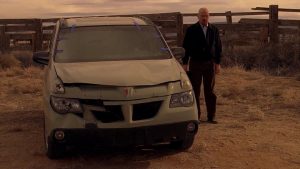
Looking is where difficulties sometimes arise.
Body and trim pieces can be difficult to find, especially if the orphaned car in question wasn’t one that they made a lot of – and for a long time. Or very popular after they stopped making it.
Sometimes, it’s a mix of these things.
In the case of my ’76 Trans Am, finding parts for the engine is easy because its engine is basically the same engine that was installed in millions of Pontiacs over almost two decades – not just Firebirds and not just ’76 models. Even though Pontiac is long gone, the supply of engine parts for old Pontiacs is still abundant.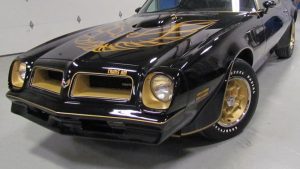
Also things like carburetors and brake parts and suspension bits and pieces – all of them shared with many other GM vehicles over many decades and long after my particular Pontiac wasn’t being made any more.
However, if my car’s front end gets damaged, it’s tougher – because my car’s front end was only made that one year; the ’75 Trans-Am has a different front end and so does the ’77 and all other Trans-Ams.
It would be even tougher to find certain little and even more specific trim parts if my ’76 were a Limited Edition ’76 – the first year for the black and gold paint scheme and the only year for the LE, with unique to that model 50th Anniversary trim, all in gold trim.
Lucky for me, Trans-Ams like mine (including LE Trans-Ams) are popular – and that means aftermarket support. Reproduction parts are available – often better quality than the original stuff – even for one-year-only noses, like my car’s. It is probably easier to find trim parts for my almost 45-year-old Pontiac than it would be for a much newer – but far less popular Pontiac like say an ’04 Aztek.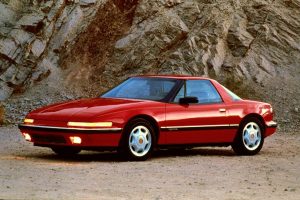
Even so, the Aztek’s engine is a GM engine – the same engine that was put into millions of Chevys and Buicks and so you’ll have no worries keeping that orphaned Aztek running. But it might be harder to keep it looking sharp.
Well, keep it looking like it looked.
Sometimes, it can be hard to find cosmetic parts for a car that isn’t orphaned but wasn’t popular. For example, the Buick Reatta. Just because the brand is still available doesn’t always mean parts – especially trim (and sometimes, electrical) parts are.
This is the sort of stuff you’ll want to know about before you buy a given orphaned car – or even one that wasn’t. If you do end up buying one that was built for just a few years or just one year – and which no one seems to remember – you might want to buy extra trim and body parts when you have the opportunity and keep them stored away for just-in-case.
You may never need them. But if you do, you’ll be glad you did!
(The * asterisk placed above – after “new Pontiac V8s” – is there because while it is technically true that Pontiac continued to build a V8 – the 267/301 through 1981 – this last Pontiac V8 does not share any interchangeable parts with the Pontiac V8s made from the mid-1950s up to 1978, which was the final year for that branch of the Pontiac engine family tree; Pontiac Freaks will be aware that some of the last-of-the-line 400 V8s were held over and installed in new ’79 Trans-Ams but they were cast in 1978.)
. . .
Got a question about cars, Libertarian politics – or anything else? Click on the “ask Eric” link and send ’em in!
If you like what you’ve found here please consider supporting EPautos.
We depend on you to keep the wheels turning!
Our donate button is here.
If you prefer not to use PayPal, our mailing address is:
EPautos
721 Hummingbird Lane SE
Copper Hill, VA 24079
PS: Get an EPautos magnet or sticker or coaster in return for a $20 or more one-time donation or a $10 or more monthly recurring donation. (Please be sure to tell us you want a magnet or sticker or coaster – and also, provide an address, so we know where to mail the thing!)
If you’d like an ear tag – custom made! – just ask and it will be delivered.
My latest eBook is also available for your favorite price – free! Click here. If that fails, email me at [email protected] and I will send you a copy directly!


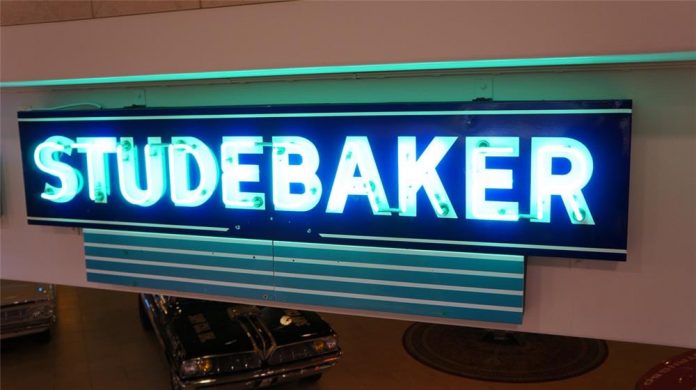


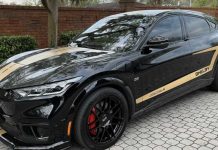






As for we Oldsmobile folks, the 1964-1990 Rocket V8, particularly the 307-330-350-403 small block, is probably GMs other most produced engine, along with the 3.8 Buick V6. Those were used in Pontiacs, Buicks, and Cadillacs. It was also one of the last carbureted engines available, as it was used right until 1990.
As for the diesels, the best thing to do with them is use them to make a killer gasoline Olds small block: those beefy blocks can take some serious boring out…and they’re dirt cheap! Buy one, rebuild it (but not for diesel) and toss it in your Cutlass or Vista Cruiser, or even your Delta 88, and have yourself a real fun sleeper!
Interesting prospect, Bryce- that of turning a GM “diesel” into a gas-job….but how does one reduce the compression ratio sufficiently?
Hiya Nunz!
One can reduce compression by using dished/cut pistons or by swapping cylinder heads (I bumped up the stock 7.6:1 CR that my TA’s 455 had to 8.3:1 or so by changing heads; could also go to much higher using the same method) but with a diesel, I think you’d have to deal with other major changes requiring more than swapping parts and the thing would probably not run well if at all!
I know some folks who did this. When they did, they only used the actual block itself. All other parts: pistons, rods, crank, cam, heads, etc. were aftermarket.
Here’s an example:
https://www.enginelabs.com/news/video-alan-hood-builds-hot-442ci-olds-from-diesel-block/
Good stuff, Bryce!
And: As an Olds guy I am betting you will agree with me about one of the most under-appreciated V8s ever made, the 403. As you also probably know, this V8 became the standard engine in the Pontiac Trans-Am circa 1978-79 and many were sold with them.
They got a totally underserved rep back in the day for being dogs. But it’s as easy to wake one of them up as it is to wake up the also-doggy (as it came) 400 Pontiac of the same era. Both had low CR (because crappy gas) and very mild cams and were paired with automatics and (in the TA) 2.41 rear axle ratios.
Yup – doggy.
But – and here I speak from personal experience with a ’79 403/auto TA – a cam swap and some tuning plus a set of headers and a real dual exhaust (these cars came with dual outlet exhaust – not dual exhaust) plus a swap to a 3.23 ring and pinion and now you’re talking!
The Olds V8 could make tremendous torque when set up right – and horsepower, too.
Eric, you’re definitely right about the out of this world torque that the Olds Rocket can make: My ‘68 Delta 88’s standard 455 with a 2 barrel and 9:1 compression made 310 hp and 490 lb/ft of torque at the crankshaft in stock form…the mods I made likely made that 375 hp and 520 lb/ft. The 1970
Toronado engine made 400 horses and 510 lb/ft at the crankshaft…the same horsepower and only 40 fewer lb/ft with 45 fewer cubic inches than the 1970 Cadillac 500 in the ElDorado.
Mondello Performance has done some amazing things with the Olds Rocket. Joe Mondello (aka Dr. Oldsmobile) and his team of Rocket scientists have built some serious performance engines that can make your car really blast off. (Sorry, couldn’t resist!)
Heh, Bryce- I could see the appeal assuming one could retain the heavier diesel crank and bearings and rods (Didn’t look at the link yet- but if that’s what they do….cool!).
Eric, I’ve always been a fan of the olds 403. Never heard anyone who actually knows what they are talking about “dis” them.
Parts stores in smaller towns can be good sources.
I remember walking into an auto parts store in Flagstaff in mid ’70s with my then brother-in-law.
Dan thought he would have some fun with the parts clerk, and asked for a pan gasket for the IH 233 GRD (a flat head six) in his 1948 IH flatbed. Clerk went in the back room and returned with the correct pan gasket, which IIRD was genuine IH part, asked if there was anything else.
IH and Ford shared many moving parts, such as Spicer axles & differentials. When I rebuilt the rear diff in my IH FWD, the only parts I *had* to buy at IH were the ring & pinion, because IH used a different gear ratio than Ford. All other parts were identical between the two makes. Brake cylinders for my b.i.l.’s aforementioned ’48 IH flatbed were also Ford parts, and were readily available in mid 1970s, at least in Flagstaff, AZ.
If you are looking to maintain or restore an old VDub, there is place here in Corona, CA called Wolfsburg West which manufactures repro body & trim parts for VW vehicles.
Ya mean I may want to reconsider getting that Hudson Terraplane for a cross-country trip? 😉
Hudson was a great car, Nunz! I certainly wouldn’t turn my nose up at an early 1950s Hudson with Twin-H power to take a long trip in.
So true, Jason!
I’d take a Hudson or a DeSoto or something like that any day over a ubiquitous Chevy or Ford!
I’d love to have a Hudson Hornet!
Hi Nunz,
I mentioned the ’86 Fiero GT (four speed manual) that is at my buddy Tim’s shop. Such a neat car! I know these have various issues – all cars have issues. But I love the mid-engined layout and the air bag-free interior and the general ‘tude of the thing. Would buy it if I could, if times weren’t so crazy.
I drive an old “orphaned” vehicle (AMC) but mechanical parts are still pretty easy to come by. Part of the reason forf that is the company bought a lot of components from the Big 3 as well as major parts suppliers, another is due to the popularity of Jeep. Trim and body parts are more of a problem because Chrysler destroyed their inventory of pre-1980 AMC parts, and the tools to make them, when they took over. Studebaker owners have an easier time of it even though that company left the car business over 20 years prior to the AMC brand’s demise because the inventory of Studebaker parts was preserved.
I expect as time goes by replacement electronic parts for the newer old and orphaned vehicles are going to be a problem. Fortunately my old bus hails from a time when cars did not have computers and the most complex electronics were found in the radio.
Hi Jason,
Yup! Older cars like yours and mine are so simple it would be relatively easy to just make a new wiring harness, for instance. There are a few specific items that might be more challenging – like the printed circuit behind my gauge cluster – but even that is doable, if need be.
My car is pushing 50 and could still be a viable daily or at least regular driver!
Hi Jason. I talked to a Studebaker parts seller here in Melbourne Aus a few years ago and he stated that any part, for any year can be made if not available for purchase. Including body and trim parts.
That’s what I’ve always heard about Studebakers, just about everything was preserved. AMC guys have it a lot tougher since Chrysler plowed all of the parts and tooling they had in stock and could get their hands on from dealer returns into a landfill. All that’s left is whatever dealer stock didn’t get sent back to corporate and a handful of parts that were in private hands. After more than 30 years they’re pretty thin on the ground.
Eric,,, we have a shop here in town that actually manufactures some of the body parts. They revive some beautiful “American” cars. I would admire them when I attended the local car shows before the fake NoFun Virus.
Parts availability is an interesting thing. I have a 1997 Chevy Cheyenne pickup that needs a new clockspring. It’s out of production and there are no more in the supply chain. There are other parts that are completely out of production for the truck like cruise control throttle cables.
There aren’t many vehicles more common than a chevy pickup, except maybe the Corolla or a Ford pickup. I’m starting to wonder if a lot of these trucks were taken off the road during cash for clunkers, reducing the demand for parts that don’t generally wear out.
The vehicle age, adjusted for today’s longer lived vehicles is the range where parts for things that aren’t entirely necessary get difficult to find and one must resort to junkyards.
I hesitate to write this in case one of those mask narc’s is lurking here, but I think it’s interesting enough to warrant it: I wrote a few days ago how I was treated at Palmetto Armory, a gun store that styles itself a repository for the defense of liberty (!) for not wearing a mask though I just wanted to dash in, buy one item, and leave.
In contrast I stumbled across one of those blood drives going on and wandered up. No mask, no appointment, no problem. (Red Cross, where I’ve donated every two months for about 25 years, requires an appointment that’s at least three weeks out and has lost my donations forever). A delightful young lady processed me without a sideways glance, and the bus was of course very confined and I was in there for the time it took to fill the bag. All very friendly, not a word said against me, and some agreement when I mentioned I believe it’s all submission training. When we were done they gave me my cookie and juice and said they look forward to seeing me again.
So think about that. A huge store filled with “molon labe” shrieking pistol wearing tough guys who harassed and refused me service for not wearing a training burka, vs three youngish women in very close quarters who treated me like a valued human being and welcomed me back. The world is upside down and inside out.
Mr Serling, I’d like to leave this episode now.
whoops! Sorry about that Eric. Clearly I meant to put this under the Diaper Report
I am a admirer of the Twilight Zone BUT that said it has one of the most propagandist shows I have seen in my lifetime. The episode was “He’s Alive”
As a ‘real’ history buff IMO the show has many historical errors, in fact the whole show was a historical error but it shows the fascistic trend we are seeing today. The good guys won, of course, but I am not so sure that will be today’s result.